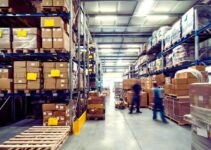Companies used to consider reverse logistics a very difficult and cumbersome area. However, the increasing online shopping trends and customer demands have pressured the market and retailers to focus on this area. It is difficult for companies to be innovative in this area and follow the changing market trends. Today, we’ll discuss the reverse logistics system; its definition, various types, step-by-step process, advantages, and disadvantages.
What is Reverse Logistics System?
A reverse logistics system is a process of the supply chain of returning goods moving back from the end consumer via the SC channel to the manufacturer or retailer. Customers return goods to the customers for various reasons like the following;
- Damaged or flawed product
- The product has reached the end of its product lifecycle
- Don’t need the product or not useful to them
- The company is offering returns
When the abovementioned reasons happen, then the role of reverse logistics comes into play. The process of RLS becomes applicable when you have to recycle or dispose of the products; relevant to the situation where the end consumer is managing the resale, disposal, or refurbishment of the questionable product.
Types of Reverse LS
Some of the main types of reverse logistics systems are as follows;
Packaging Management
Companies dealing with the packaging management process would reutilize packaging material to decrease waste and save the material and packaging costs. Otherwise, the company has to spend on the packaging of the returned products.
Refurbishment or Remanufacturing
It is a form of reconditioning product returned that would prevent retailers and companies from losing their profit on the defective products; rather they only remove the unnecessary waste.
Procedure and Return Policy
The policy guides you to measure and analyze the customer returns against its criteria. The company should follow its return policy and procedure both for its employees and customers. It is significant that your policies should be transparent and accessible to all the customers.
Return Management
Returns management is a very common form of reverse logistical process. It focuses on managing regular customer returns, and making the process seamless and user-friendly experience in order to improve the brand image and customer loyalty.
Repair & Maintenance
As the name implies, customers often return their electronic products like laptops or mobile devices for repair because the warranty performed well for the company.
Rental Equipment
Customers need to return the leased or rental products at the end of the predefined term or time period. Here, you send the goods back to the manufacturer or producer for redeployment, recycling, or disposal.
Delivery Failure
If the products or goods don’t reach their destinations; then the delivery service providers should return them to the fulfillment centers where they should ship them back to the producers. It is significant for efficient companies to deal with delivery failure by fixing the problem.
End of Service Life
Customers should return some particular goods to the company at the end of their productive life; where the producer or manufacturer would properly dispose of them.
Unsold Product
The direct focus of the returned goods is from the end consumers and fulfillment centers to the manufacturers. The method of unsold goods happens due to poor sales or delivery refusal or some other factors.
Process of Reverse LS – Stages
Some of the main stages involved in the process of reverse logistics process are as follows;
Return Process
When customers return the product, the company should also start the return process by launching their SOP in action. Almost every company deals with returned products and they should have a proper return process. However, it means defining the route and channel for the returned product once the customer sends it back. It helps companies to decrease pollution and unnecessary waste.
Category
It is significant to analyze the returned products after receiving them and determine their category where you put them in the process. There are various options and stages for the returned products they should go to the resale, recycling, or refurbishment stage. Companies should streamline their reverse logistical process and system in place to recognize the problem and categorize the return.
Decreasing Waste
Companies should keep moving the returned products to decrease the waste generated by the products when they stay at one point for some time. The repairing products should move to the repairing unit to maintain the balance; move the other products to resale and disposal units relevant to their requirements.
Repair Process
It is important to manage the repaired items in the repair department in a timely fashion so that it should meet the end-of-life arrangements. The company should quickly repair the repairable items transfer them to the company’s inventory and dispose of them if they’re irreparable.
Recycling
For the irreparable products that can’t be fixed, the company should dispose of them in the proper manner. Companies should be careful while disposing of or recycling products that are irreparable. It means that they should take environmentally sustainable steps for the wasted products.
Advantages of RLS
Some of the main benefits and advantages of the reverse logistics system are as follows;
- Decreasing waste and achieving sustainability
- Better brand image
- Limited losses
- Quick and improved services
- High customer retention ratio
- High customer satisfaction
- Low cost
Disadvantages of RLS
Some of the disadvantages and challenges to the reverse logistics system are as follows;
- Difficult to track and automate the reverse logistical process
- Improper infrastructure
- Evaluating and monitoring the reverse logistical process is difficult
- Challenging to employ reverse logistics as a part of the supply chain
Conclusion: Reverse Logistics System
After an in-depth study of the reverse logistics system; we have realized that the reverse logistical method is the need of almost every business or company. If you are learning about the business of reverse logistical systems, then you should keep in mind the abovementioned types, advantages, and disadvantages.
Ahsan is an accomplished researcher and has a deep insight in worldly life affairs. He goes Live 3 days a week on various social media platforms. Other than research writing, he’s a very interesting person.


